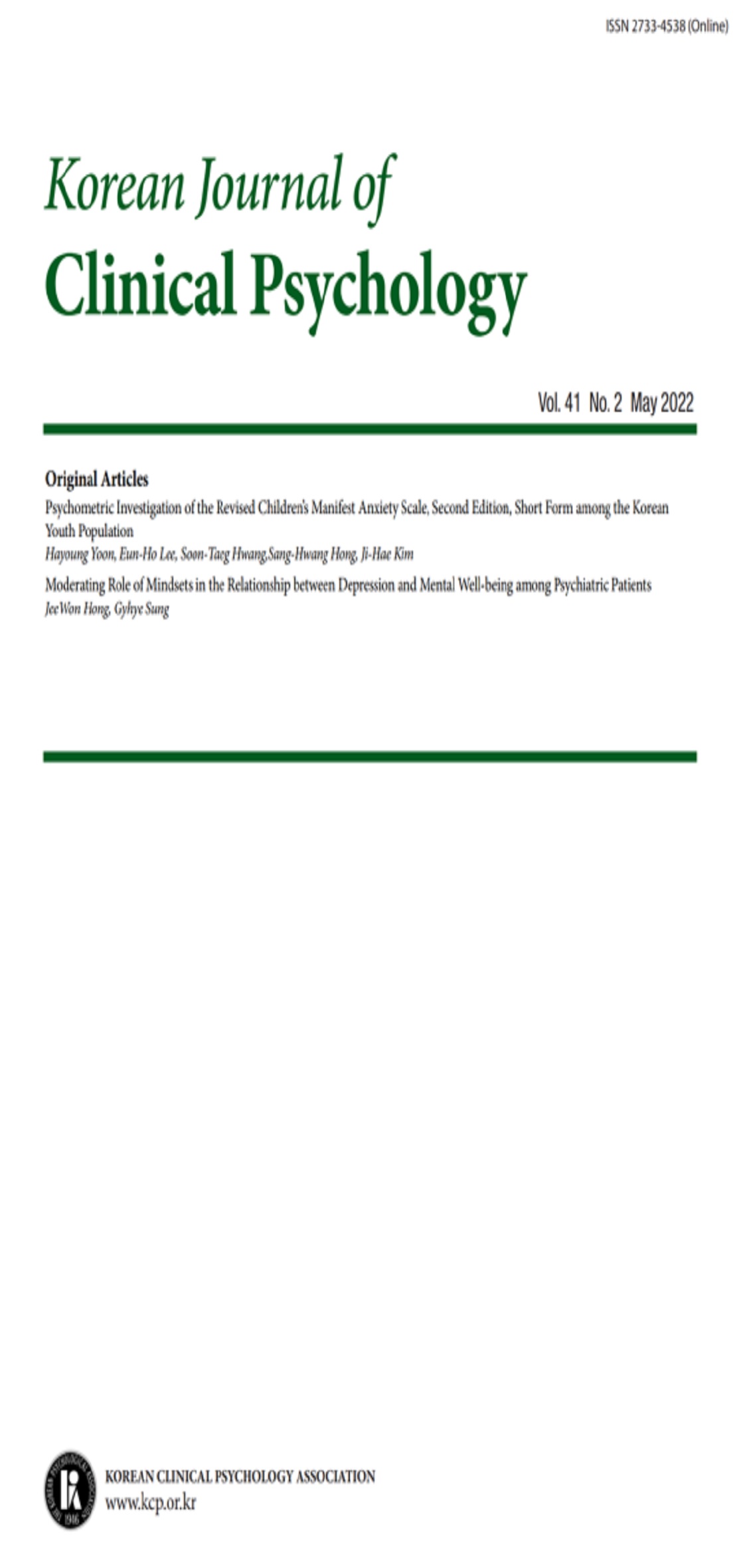open access
메뉴
open access
메뉴 E-ISSN : 2733-4538
E-ISSN : 2733-4538
Cattell의 16PF를 한국표준화한 성격요인검사에 대한 타당도 연구를 실시하여 이 검사의 표준화연구에서 미비했던 타당도 연구를 보완하여 이 검사의 좀 더 나은 임상적 사용을 돕고자 했다. 성격요인검사의 구성타당도 연구부문에서는 다면적인성검사, 이화자아방어검사, 스트레스보고검사와의 관계를 통하여 성격요인검사척도들의 특성을 여러 각도에서 조명해 보았다. 대부분의 척도들에서 선행연구 및 표준화연구의 결과들을 재확인해 주거나 더 유의한 수준에서 검증해주었다. MMPI 검사와의 관계에서 대부분의 척도들이 서로 예상된 방향으로 상관관계를 보였고 이화자아방어검사와의 관계에서는 성격요인검사의 역동적인 특성이 밝혀졌다. 스트레스보고검사의 사용은 전문가의 평정을 사용함으로써 자기보고형검사의 약점을 보완하였다. 성격요인검사의 일차요인들을 토대로 판별분석을 시행한 결과 정신분열증집단은 54.8%, 정동장애집단은 53.1%, 신경증집단은 34.6%, 정상집단은 53.2%가 각각 자기집단에 올바르게 분류되어 전체적으로 49.58% 가 정확하게 분류되었다.
This study aimed at testing the validity of the Korean Presonality Factor Test(KPFT) standardized in Korea, which was not satisfactorily done by the time of its standardizing to help clinicians use it better in their assessment work. The Tests used in examining the constructvalidity in this study are MMPI, Ehwa Defense Mechanism Test and Stress Report Inventory. It has been turned out that in most of the scales of the KPFT the results shown in this study corresponded to those of the standardization study or those of other antecedent researches The correlations of the scales of the KPFT with MMPI came out mostly in expected direction and the correlation study with the Ehwa Defense Mechanism Test helped understanding the dynamic aspects of the scales of KPFT. The use of the Stress Reporting Test which included ratings by a psychiatrist and a psychologist enabled this study to avoid problems that arise often in the studies using only self reporting inventories Discriminance analysis using scales of KPFT classified 54.8% of schizophrenics, 53.1% of mood disorder psychoses, 34.6% of neurotics and 53.2% of normals correctly.
